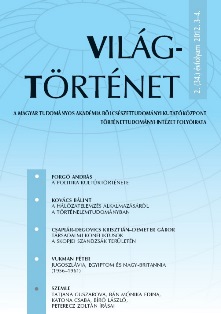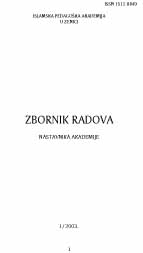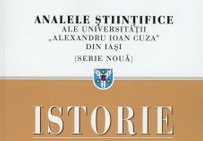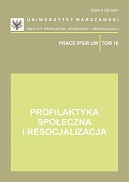

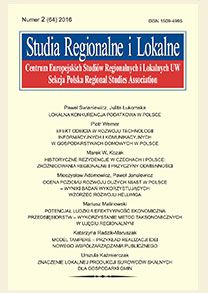
Keywords: Brussels; sustainable development; urban policy; neighbourhood contracts; Regional Development Plan
The paper is an overview of selected aspects of sustaining the development of Brussels. The mechanism of multi-level governance of the capital of Belgium and the nature of its problems resulted in the emergence of instruments that give local actors greater control over the urban processes. The paper describes two of such instruments, namely the neighbourhood contracts and the Regional Development Plan. Despite some criticism, both are considered valuable tools of urban policy. The way in which they have been adapted and the results they give confirm that Brussels’ sustainable development is achieved most effectively by the application of system solutions, specifically those used in the smallest administrative areas of the city – neighbourhoods.
More...
Keywords: local self-government units; fiscal inequalities; equalization transfers; horizontal redistribution
The subject of the paper is the discussion on horizontal redistribution of public revenues among local self-government units. The assumed aim of this redistribution is to equalize the different levels of income and burden of expenditure. The paper lists desirable features of this redistribution, motives for its application, and arguments of its opponents. The analysis of the latter shows that while part of the criticism refers to the essence of horizontal redistribution, significantly more of it concerns the dysfunctions of its mechanism which became apparent after 2008. The criticism focuses, for example, on the criteria for making compensatory payments, the structure of tax revenue indices, the so-called reference period, the amounts of compensatory payments, the criteria for the distribution of the collected amounts. The paper includes suggestions concerning recommended directions of changes in the mechanism of this redistribution.
More...
Keywords: inter-municipal cooperation; inter-organizational cooperation; horizontal cooperation; vertical cooperation; financial transfers; financial links; local government; local finance
The paper describes an indicator constructed to measure financial flows between local governments in Poland. These flows are considered as the measure of local governments’ cooperation and of the strength of functional connections crossing administrative boundaries. The purpose of this paper is to present the scale and the subject of financial transfers between local governments and the factors explaining the variation of local governments’ financial cooperation. The biggest financial transfers take place in functional urban areas, but only in terms of current expenditures. Transfers of investments expenditures are higher outside these areas and are characteristic of less affluent municipalities. The strongest associate function is to provide transportation services: both in terms of current expenditures and investments.
More...
Keywords: EU funds; structural funds; local development; regional development; Lubelskie voivodship
The paper examines whether EU funds may encourage local and regional development in the Lubelskie voivodship. The authors compare the actual structure of support in 2007−2013 with the necessary conditions of a positive and sustainable result of financial assistance found in the literature. In addition, six case studies were carried out to explore the mechanisms of support at the local level. The analysis shows the dominance of infrastructure spending and support for rural areas. Low expenditure on economic and knowledge capital is accompanied by virtually no support for social capital and administration quality improvement. Funds at the local level are often used purely as social aid. The observed ways of spending the funds may lead to petrifaction of an unfavourable regional economic structure, and do not ensure growth of production factors productivity
More...
Keywords: classical paradigm; political economy; regional development theory
Neoclassical economists usually think of “microfoundations” before they come to macroeconomics. We claim exactly the opposite: every microeconomic theory should be grounded in a credible macroeconomic model. Such a model may be the classical paradigm and Kaleckian economics, which are fundamentally different from the neoclassical paradigm. Thus, we will prove the following thesis: political economy is better than the neoclassical theory at describing and explaining contemporary regional development processes. State policy has a fundamental role to play in shaping regional development, while local authorities may perform an auxiliary function.
More...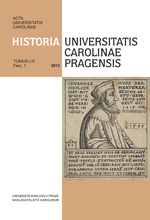
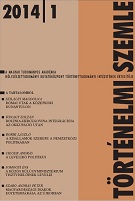
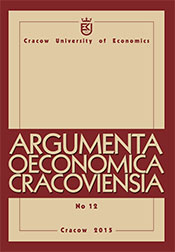
Keywords: technical analysis; efficient market hypothesis; overconfidence; “better than average” effect
According to the Efficient Market Hypothesis, investors cannot achieve above-average returns by using technical analysis tools. This paper attempts to answer the question as to what makes technical analysis popular, regardless of the efficiency of capital markets. The objective is to verify whether investors have certain cognitive inclinations that make them more likely to believe in the efficiency of technical analysis models. We postulate a positive relationship between different forms of overconfidence and faith in the effectiveness of technical analysis methods. This relationship was confirmed only in the case of the “better than average” effect. The two other examined forms of overconfidence, namely, overprecision and illusion of control, did not yield statistically significant results. However, the lack of confirmation by all three forms of overconfidence is in line with the results presented in the literature, namely, that there are no significant relationships between different forms of overconfidence.
More...
Keywords: taxes; fees; environmental protection; statistical reporting
This article tackles the issue of ecological fees and taxes in force in Poland in light of the new Eurostat interpretation. This is a consequence of the entry into force of new European Union rules, which oblige Member States to establish uniform reporting in this regard. Linked to this is the need to define and analyse the fees and taxes in force in Poland in terms of their compliance with the new rules, and to classify the various financial instruments (taxes, fees, etc.) as belonging to the ecological group. The author reviews and compares these instruments’ definitions with the new Eurostat interpretation on the basis of Polish and foreign literature. The result is a juxtaposition of the ecological fees and taxes in force in Poland under the new Eurostat interpretation as well as a brief description of them.
More...
Keywords: state aid; European Union; treaty premises; economic benefit to the beneficiary
The purpose of this article is to investigate the permissibility, or otherwise, of state aid in the European Union in terms of the premise of economic benefit set out in the TFEU. This should also be seen from the perspective of the type of advantage gained, namely, the kind of state aid as defined by the European Commission using one of four groups of aid instruments. The research thesis was adopted that the financial and economic crisis has affected the structure of aid provided by Member States in such a way as to increase the share of tax subsidies in it. These subsidies involve reducing the burden of public contributions, or ceasing to collect them, so that the funds from these accounts are available to business entities, which means, in turn, that public cash has less of an impact on the public finance sector.
More...
Keywords: corporate bankruptcy prediction; Altman model; structural equation modelling; matching pairs sample selection
The classical tool of bankruptcy prediction is the multivariate discriminant Altman model. The aim of this paper is to present a proposal for the use of structural equation modelling (SEM) to select financial indicators for an Altman-type bankruptcy prediction model. Financial factors, as diagnostic variables in bankruptcy-prediction models, are not in fact directly measurable variables, and they ought to be recognised as latent variables described by various measured financial indicators. So it is possible to use a structural equation modelling (SEM) approach for this purpose. A path diagram in terms of SEM for the Altman model is presented. Based on this diagram, three variants of SEM models for the general Altman model are estimated. The essential problem tackled in this paper is how to appropriately select non-bankrupt firms. Matching pair sample selection methods are applied. The non-bankrupt firms are from the same branch of industry and are similar in size. The major objective of our methodological proposal to use a general SEM model to study corporate bankruptcy is to overcome the difficulties in the modelling of bankruptcy risk through the use of previously-applied methods.
More...
Keywords: trade credit; risk; agricultural enterprises; Middle Pomerania
The aim of the research presented in this article is to assess the risks associated with granting trade credit at a group of agricultural enterprises on the example of businesses located in Middle Pomerania. This assessment of the risk involved in extending credit to business partners in the agricultural sector was conducted in stages. The first task was to describe the sample of farms, with particular emphasis placed on the effects of their financial decisions. This was followed by a presentation of the activity of agricultural holdings in respect of the granting of trade credit, whose main aims were to evaluate the tendency to postpone the maturity dates of customer payments and to assess the characteristics of price discount policies. Counterparties’ credit risk was measured as the proportion of total sales revenue lost by agricultural businesses due to non-repayment of trade credit.
More...
Keywords: knowledge economy; competitiveness; Central and East European countries; development
The purpose of this research is to analyse the influence of knowledge resources on the competitiveness of Central and East European (CEE) countries. The aim is to identify the correlation between the achieved development level of the knowledge economy, as measured by the Knowledge Economy Index (KEI), and the competitiveness level, as measured by the Global Competitiveness Index (GCI). The study was conducted using descriptive statistics, correlation, and cluster and regression analysis. Structurally, the paper is composed of the following parts: a) analysis of CEE countries’ competitiveness according to the GCI and KEI; b) examination of the correlation between the GCI and KEI in CEE countries; and c) analysis of the influence of pillars within the KEI on the GCI in CEE countries. The research results show that there is a strong positive correlation between the GCI and KEI. The outcomes of this study are useful for development policy-makers in CEE countries and highlight the relevance of improving knowledge economy performance in future.
More...

